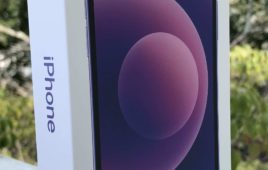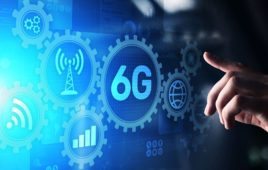NEW YORK (AP) — It was the one place that New Yorkers could go to get away from singing cell phones, beeping BlackBerries and torrents of tweets. And now it’s disappearing.
The New York City subway turned on its first cell phone antennas Tuesday, allowing AT&T and T-Mobile subscribers to make calls and surf the Internet from underground platforms and corridors at six stations in the Chelsea section of Manhattan. The service will expand to 271 other stations over the next five years.
City officials say the service was long overdue, since travelers in other cities have been making calls underground for years. But in a city that never sleeps, or uses its “sleep” mode, reaction among passengers was mixed.
“I’m not too happy about that,” said Helen Wekony, 84. “Some people’s voices are very strident.”
Other passengers greeted the prospect of added chatter with a solid fuhgeddaboutit.
“Deal with it,” said George Perez, 44. “That’s New York.”
The move comes as other commuter railroads in the region are cracking down on such Chatty Kathies. The Metro-North Railroad to suburban points is designating phone-free “quiet cars” on 31 rush-hour trains next month, and New Jersey Transit has two quiet cars per train.
But officials say the subway is different: The signal covers only station areas, not train tunnels, so it’s unlikely that riders will be pinned against their 5.2 million fellow weekly passengers while they ramble on about their foot problems or love lives.
And with train brakes screeching, express trains roaring and the occasional steel-drum player making a ruckus, most callers on the platforms won’t want to talk long anyway, they said.
“In this environment there will certainly be some phone calls, but on a platform it’ll really be tweets and texts and emails,” said William Bayne, chief executive of Transit Wireless LLC, the company building the network. “So really, the noise pollution will not increase.”
Some riders worried how the arrival of the Internet would affect the subway experience. Part of the fun of New York is people-watching in the subway, and it’s harder when everyone is bent over their BlackBerries, said Edith Lawrence, a pediatrician.
“It disrupts a lot of that social contact that you can have with people, that eye contact or a smile,” Lawrence said.
Officials with the Metropolitan Transportation Authority, which runs the subway, say such intangibles are outweighed by the security benefits.
For years posters in the subway have been urging passengers to call police if they see anything suspicious — but without cell service, they couldn’t actually do it. The U.S. Department of Homeland Security launched a service this year to alert travelers of terror threats via text messages, but subway riders could not receive them.
Expanding cell service might enable terrorists to use cell phones to detonate bombs — as the terrorists did in the Madrid train attacks of 2004 — but planners felt it was a gamble worth taking, said Carmen Bianco, vice president of subways for the MTA.
Extending cell phone service to the subways was a “very, very complex engineering feat,” Bayne said.
Most of New York’s subway stations were built 100 years ago out of heavy steel girders that block radio signals. Even the steps are covered in steel for durability.
Crews had to route fiber optic cables along city streets and install dozens of antennas. One of the trickiest tasks was ensuring the handoff between underground and aboveground antennas as a caller walks out of a station, Bayne said.
The business side was equally tricky, said Mark Bienstock, a planner in the transportation authority’s systems office. Rather than let several cell phone companies all put antennas in the subway, MTA officials decided to contract with New York-based Transit Wireless to build the system and rent bandwidth to cell providers. The company is majority owned by Broadcast Australia of Chatswood, Australia.
Building the system will cost Transit Wireless and the cell carriers between $100 million and $200 million, officials said. The MTA will get a share of the profits, a minimum $3.3 million annually, once the network is in all the stations.
Transit Wireless said it plans to expand service to 30 other stations within a year, including the busy hubs at Times Square, Herald Square and Columbus Circle.




